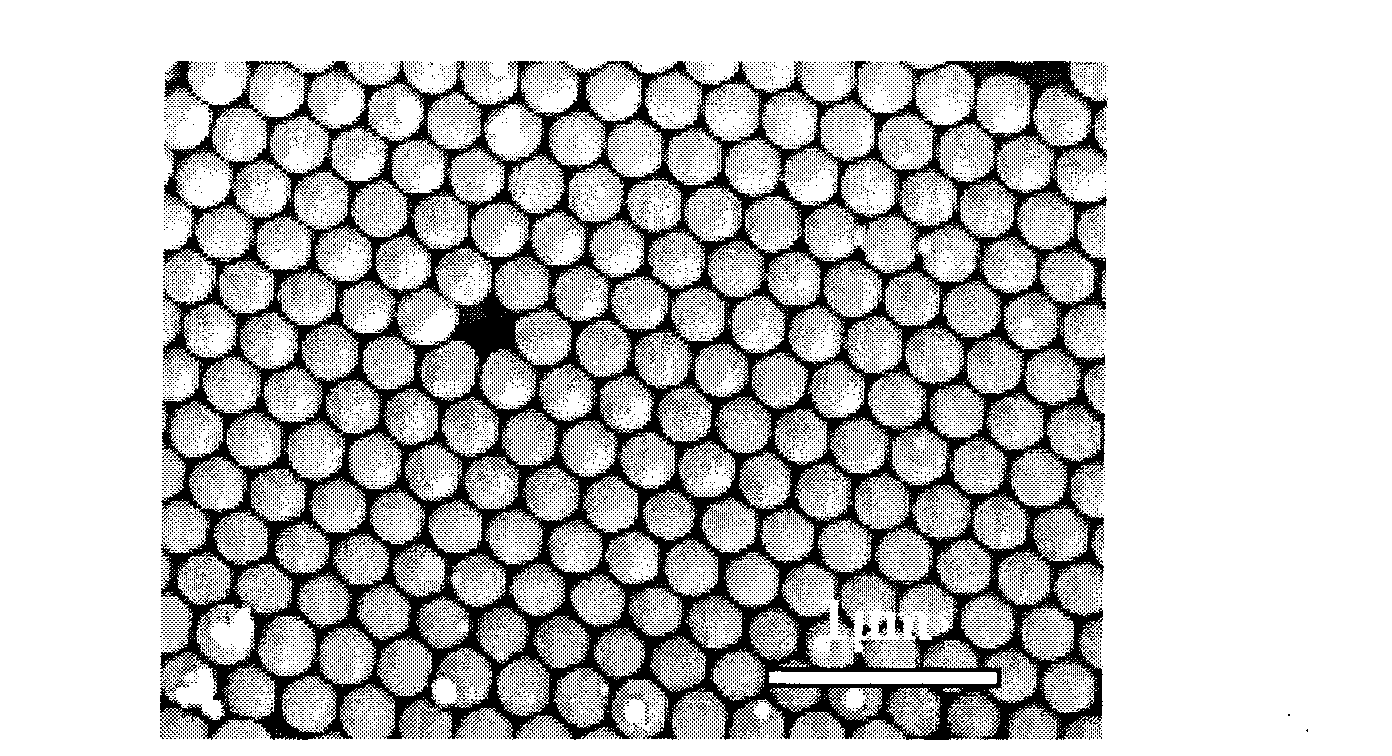Three-dimensional ordered macroporous alumina and preparation method thereof
A macroporous alumina, three-dimensional ordered technology, applied in chemical instruments and methods, alumina/aluminum hydroxide, and other chemical processes, can solve the problems of uneven particle size of alumina, material specific surface area loss, and control difficulties and other problems, to achieve the effect of improving activity and selectivity, improving mass transfer capacity, and high specific surface area
- Summary
- Abstract
- Description
- Claims
- Application Information
AI Technical Summary
Problems solved by technology
Method used
Image
Examples
Embodiment 1
[0030] Synthesis of Monodisperse Polymer Microspheres. Get an appropriate amount of twice-distilled water and heat it to boil for 10 minutes to reduce the dissolved oxygen content in the water. After natural cooling of distilled water, 135 mL was added to a three-necked flask, and then the flask was placed in a water bath and heated to 75°C. Add 0.1011 g NaHCO 3 , start the stirrer, and start feeding N at the same time 2 , stabilized for 10 minutes to make NaHCO 3 Fully dissolve. Add 0.0496 g of sodium p-styrene sulfonate (NaSS) and stabilize for 10 minutes, then add 29.4 mL of styrene monomer (St) and stabilize for 30 minutes. Finally, the initiator potassium persulfate (KPS) was added. The reaction system was kept at a constant temperature of 75° C., and the stirrer rotated at 300 rpm. After reacting for 20 hours, it was observed that there were basically no oil droplets on the wall of the three-necked flask. It can be considered that the conversion of styrene monomer ...
Embodiment 2~5
[0032] According to the method of Example 1, polystyrene emulsion particles with different particle sizes can be synthesized by changing the dosage of each reagent. The test results are shown in Table 1. figure 1 The SEM image of the polystyrene colloidal crystal template with a particle size of 240 nm prepared for Example 3 of the present invention shows a wide range of (111) planes in the crystal face-centered cubic structure.
[0033] Table 1 Polystyrene microspheres synthesized by styrene-free emulsion polymerization
[0034]
[0035] *The emulsifier used in this example is sodium dodecyl sulfate
Embodiment 6
[0037] Assembly of polystyrene colloidal microspheres and sintering of templates. Assembled by natural deposition method.
[0038] Measure 150 mL of the polystyrene microsphere emulsion obtained in Example 2, ultrasonically disperse it for 10 minutes, place it in a flat-bottomed sedimentation tank, settle naturally at room temperature, and dry it at room temperature for 3 to 7 days. After the liquid is completely volatilized, the thickness is about 1.5 mm colloidal crystal PS2.
[0039] Heat treatment of colloidal crystals: The colloidal crystals PS2 are slightly sintered at a temperature of 100° C., and the sintering time is 5 minutes. After the sintering treatment, the polymer colloidal crystal template PL2 used for preparing the porous alumina of the present invention is obtained.
PUM
| Property | Measurement | Unit |
|---|---|---|
| specific surface area | aaaaa | aaaaa |
| diameter | aaaaa | aaaaa |
| diameter | aaaaa | aaaaa |
Abstract
Description
Claims
Application Information
 Login to View More
Login to View More - R&D
- Intellectual Property
- Life Sciences
- Materials
- Tech Scout
- Unparalleled Data Quality
- Higher Quality Content
- 60% Fewer Hallucinations
Browse by: Latest US Patents, China's latest patents, Technical Efficacy Thesaurus, Application Domain, Technology Topic, Popular Technical Reports.
© 2025 PatSnap. All rights reserved.Legal|Privacy policy|Modern Slavery Act Transparency Statement|Sitemap|About US| Contact US: help@patsnap.com



